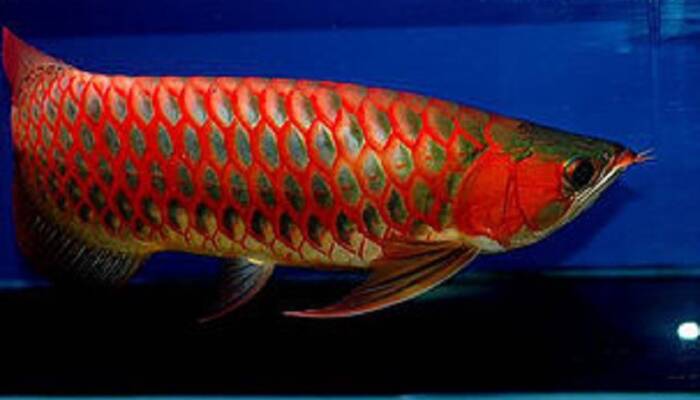Description
Australian Arowana for Sale: Your Ultimate Guide to Owning This Exotic Fish
Are you looking to add a touch of elegance and exotic beauty to your aquarium? The Australian Arowana, also known as the Saratoga or Gulf Saratoga, is a stunning freshwater fish that has captivated aquarium enthusiasts worldwide. At Ranch Of Exotic Breeds, we offer premium-quality Australia Arowana for sale, ensuring you get a healthy and vibrant fish for your collection. In this guide, we’ll cover everything you need to know about this majestic fish, including its care, habitat, and frequently asked questions.
The Australia Arowana is a rare and exotic freshwater fish native to the rivers and lakes of Northern Australia. Known for its sleek, elongated body, vibrant scales, and graceful movements, this fish is a prized addition to any aquarium. Our Arowanas are carefully bred and raised in optimal conditions, ensuring they are healthy and ready for their new homes. Whether you’re a seasoned aquarist or a beginner, our team is here to guide you through the process of owning and caring for this magnificent fish.
Why Choose Australian Arowana?
Exotic Beauty: The Australia Arowana boasts shimmering scales and a unique body shape that makes it a standout in any aquarium.
Symbol of Prosperity: In many cultures, Arowanas are considered symbols of luck, wealth, and prosperity.
Long Lifespan: With proper care, Australia Arowanas can live up to 20 years, making them a long-term companion.
Unique Behavior: These fish are known for their intelligence and interactive nature, often recognizing their owners.
Caring for Your Australia Arowana
Owning an Australia Arowana is a rewarding experience, but it requires proper care and attention. Here are some essential tips to ensure your Arowana thrives:
1. Tank Requirements
Tank Size: Arowanas are large fish and need ample space to swim. A minimum tank size of 250 gallons is recommended.
Water Conditions: Maintain a water temperature of 75-86°F (24-30°C), a pH level of 6.5-7.5, and ensure the water is clean and well-filtered.
Tank Setup: Provide plenty of open swimming space, along with hiding spots like rocks and plants.
2. Diet
Australian Arowanas are carnivorous and thrive on a diet of live or frozen foods such as shrimp, fish, and insects. High-quality pellets can also be included in their diet.
3. Tank Mates
Australian pearl arowana are best kept alone or with larger, non-aggressive fish. Avoid small fish that may be seen as prey.
4. Health and Maintenance
Regularly monitor water quality and perform partial water changes to keep the environment clean. Watch for signs of stress or illness, such as loss of appetite or unusual behavior.
Frequently Asked Questions (FAQs)
1. What is the price of an Australian Arowana?
The price of an Australia Arowana varies depending on its size, age, and coloration. On average, they range from
500
t
o
500to2,000 or more.
2. How big do Australia Arowanas grow?
In the wild, Australia Arowanas can grow up to 35 inches (90 cm). In captivity, they typically reach 24-30 inches (60-75 cm).
3. Are Australia Arowanas legal to own?
Yes, Australia Arowanas are legal to own in most countries. However, it’s essential to check your local regulations before purchasing.
4. How often should I feed my Arowana?
Young Arowanas should be fed 2-3 times a day, while adults can be fed once a day. Avoid overfeeding to prevent health issues.
5. Can Australia Arowanas jump out of the tank?
Yes, Arowanas are known for their jumping ability. Ensure your tank has a secure lid to prevent escapes.
6. What is the lifespan of an Australia Arowana?
With proper care, Australia Arowanas can live for 15-20 years or more.
7. Do Australia Arowanas require special lighting?
While they don’t require special lighting, moderate lighting can enhance the beauty of their scales.
8. Can I keep multiple Arowanas together?
Arowanas are territorial and may become aggressive toward each other. It’s best to keep them singly or in very large tanks with ample space.
Why Buy from Ranch Of Exotic Breeds?
At Ranch Of Exotic Breeds, we are passionate about providing our customers with the highest quality exotic pets. Here’s why you should choose us:
Healthy and Well-Cared-For Fish: Our Arowanas are bred and raised in optimal conditions, ensuring they are healthy and vibrant.
Expert Guidance: Our team of experts is available to answer your questions and provide guidance on caring for your Arowana.
Secure Shipping: We offer safe and reliable shipping options to ensure your fish arrives in perfect condition.
Customer Satisfaction: Your satisfaction is our priority. We are committed to providing a seamless shopping experience.
Conclusion
The Australia Arowana is a true gem for any aquarium enthusiast. Its striking appearance, fascinating behavior, and cultural significance make it a highly sought-after fish. At Ranch Of Exotic Breeds, we are proud to offer premium Australia Arowana for sale, backed by expert advice and exceptional customer service. Whether you’re a seasoned aquarist or a beginner, we’re here to help you every step of the way.
Ready to bring home your dream Arowana? Shop now and experience the joy of owning this exotic beauty!
Call to Action:
Visit Ranch Of Exotic Breeds today to explore our collection of Australian Arowana for sale. Contact us for more information or to place your order!

Australia Arowana For Sale





Reviews
There are no reviews yet.